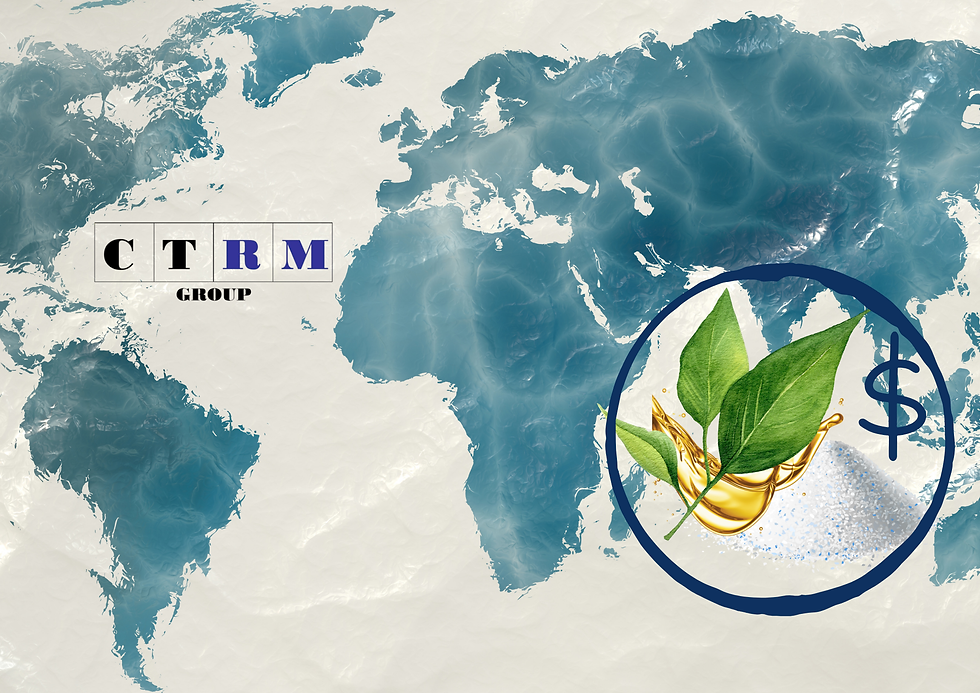What Affects Ingredient Pricing? A Look at Global Supply Chain Trends
- CTRM Group

- Jun 30
- 2 min read
Ingredient pricing doesn’t exist in a vacuum. It’s impacted by a web of global factors many of which are outside a manufacturer’s control. From climate events to geopolitical tensions, understanding what drives these fluctuations is key to navigating your supply chain with confidence.
We help our partners stay ahead of pricing trends by tracking the market forces shaping ingredient costs. Here’s a closer look at what’s behind the numbers.

Weather & Climate Impact
Extreme weather events like droughts, floods, or early frosts can significantly affect crop yields and harvest quality. Ingredients like cocoa, palm oil, and corn are particularly sensitive to climate changes, and poor growing seasons can drive prices up fast.
Example: A drought in Southeast Asia can reduce palm oil production, increasing global prices and tightening supply across food and personal care markets.
Geopolitical Tensions & Trade Policies
Import/export restrictions, tariffs, or political instability in key producing regions can disrupt ingredient flow. Sudden bans or sanctions on exports often cause sharp price swings—especially for products with limited alternative sources.
Example: Trade disputes between major exporters and the U.S. can spike costs for items like soy, sunflower oil, or spices.
Transportation & Logistics Costs
Fuel prices, port delays, and container shortages all influence ingredient pricing. Post pandemic supply chain disruptions have shown how fragile global shipping systems can be and how quickly transportation costs can add up.
Example: A spike in ocean freight costs from Asia can increase the landed cost of bulk ingredients, even if raw material prices remain steady.
Global Demand Fluctuations
Shifting consumer trends, seasonal spikes, and international demand can all tighten availability. For example, the rise in plant-based and clean label products has driven up demand (and prices) for ingredients like pea protein, coconut oil, and natural gums.
Example: As more countries adopt Western-style processed foods, demand for emulsifiers, flavor enhancers, and specialty starches continues to grow.
Currency Exchange Rates
Because many ingredients are traded globally, fluctuations in currency exchange rates can influence prices. A weak U.S. dollar, for example, can make foreign-sourced ingredients more expensive for American buyers.
How CTRM Group Helps You Navigate Pricing Uncertainty
At CTRM Group, we don’t just supply ingredients we partner with your team to provide insight, foresight, and flexibility. Through diversified sourcing strategies, forward contracts, and supply chain transparency, we help you reduce risk and manage cost volatility.
Whether you're sourcing specialty oils, clean-label emulsifiers, or food-grade preservatives, our team stays ahead of the trends so you don’t have to.
Want to Stabilize Your Ingredient Costs?Let’s talk about smarter sourcing strategies. Contact CTRM Group today to learn how we can support your supply chain.





Comments